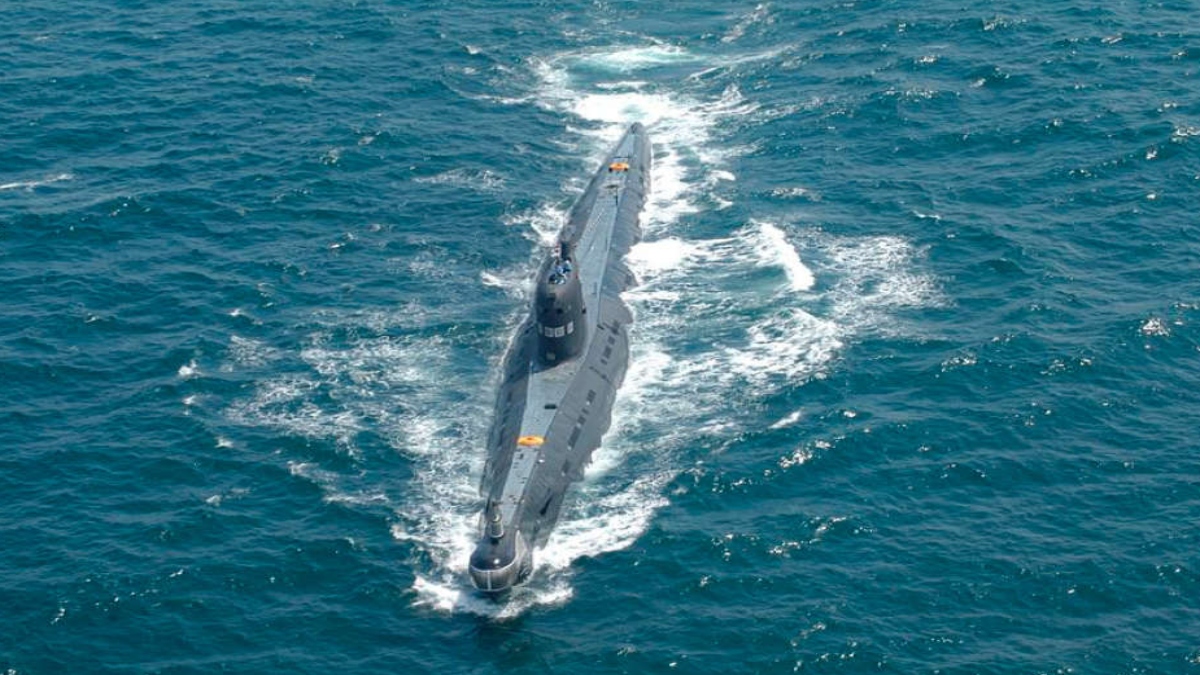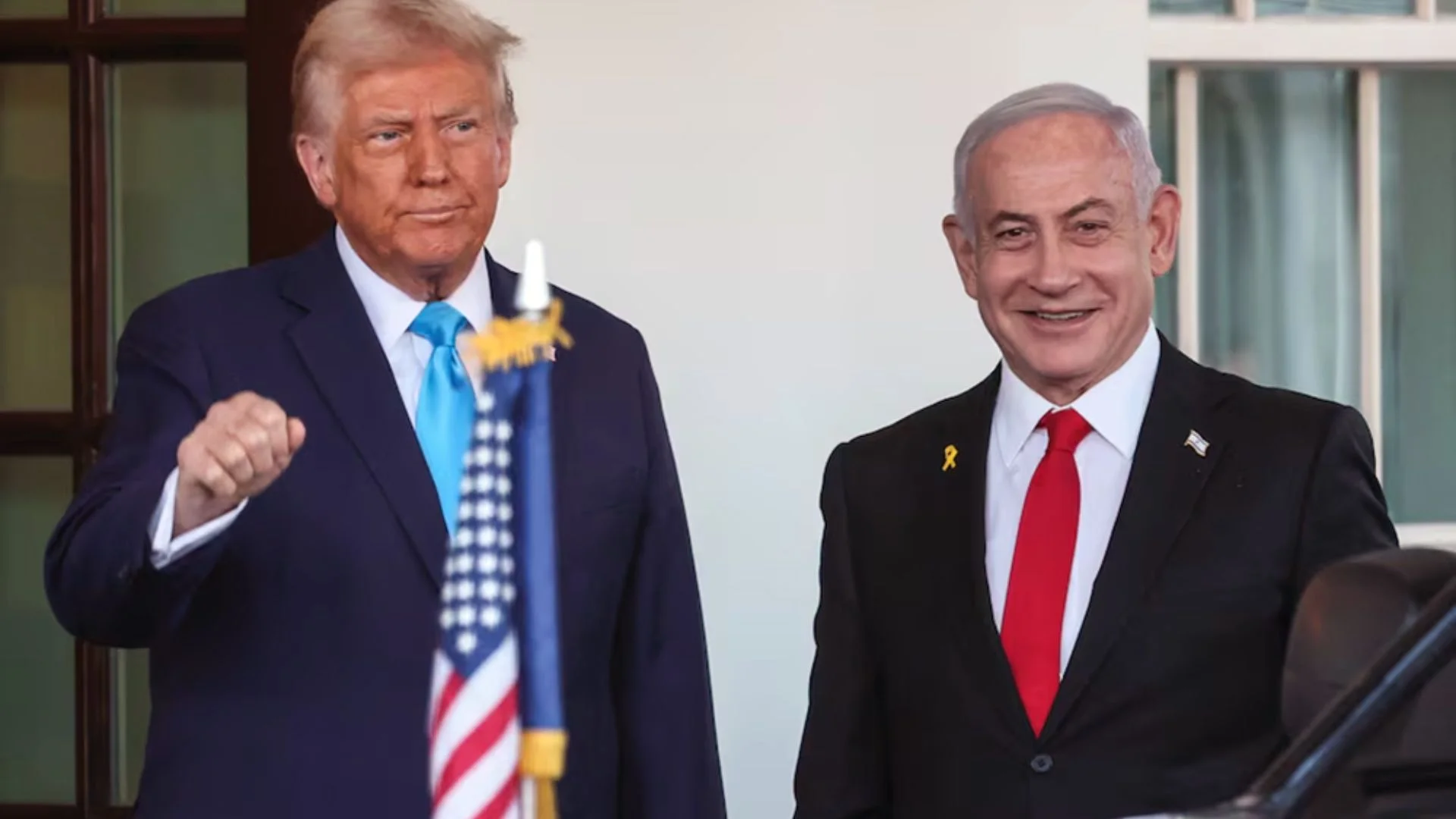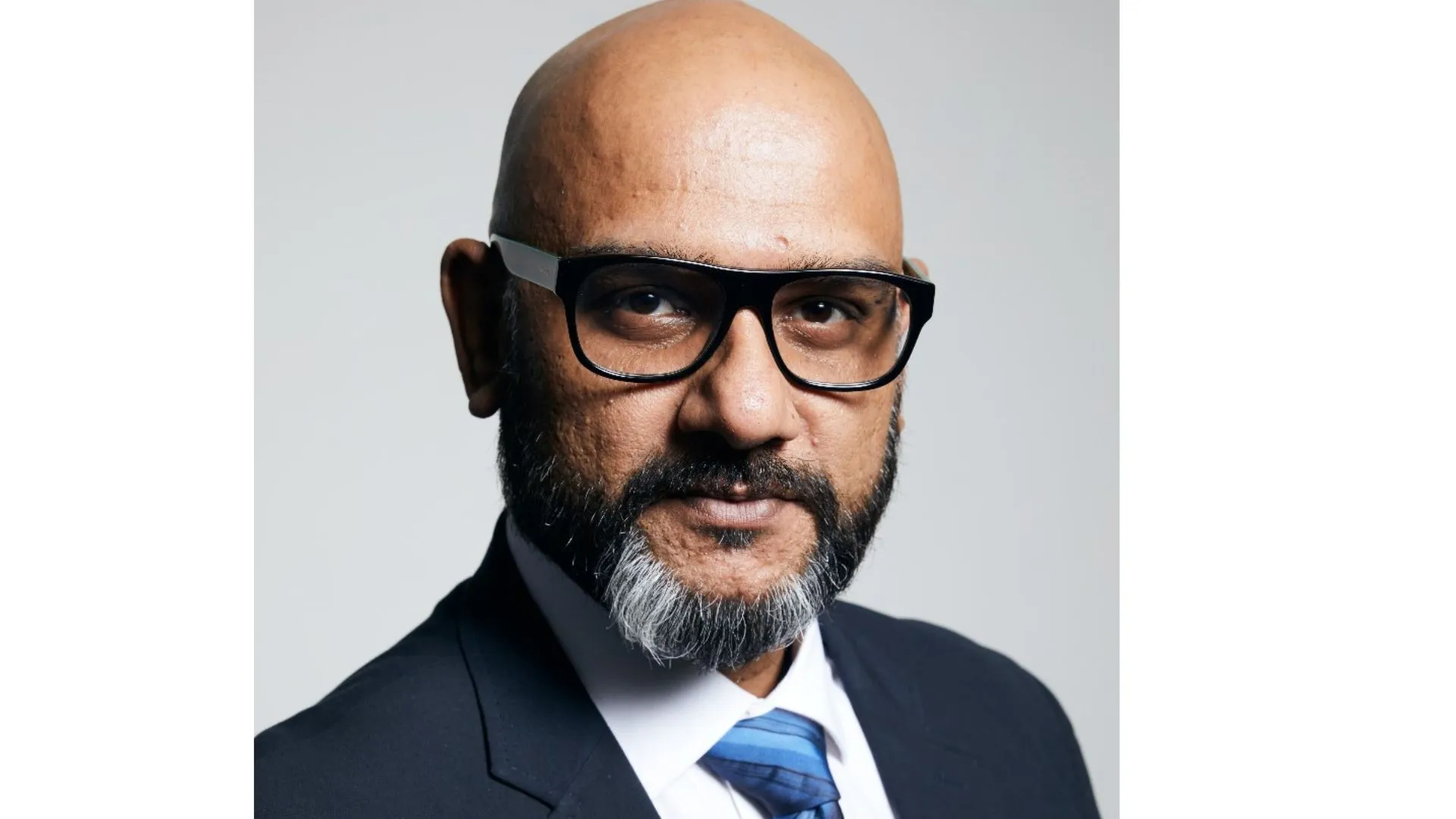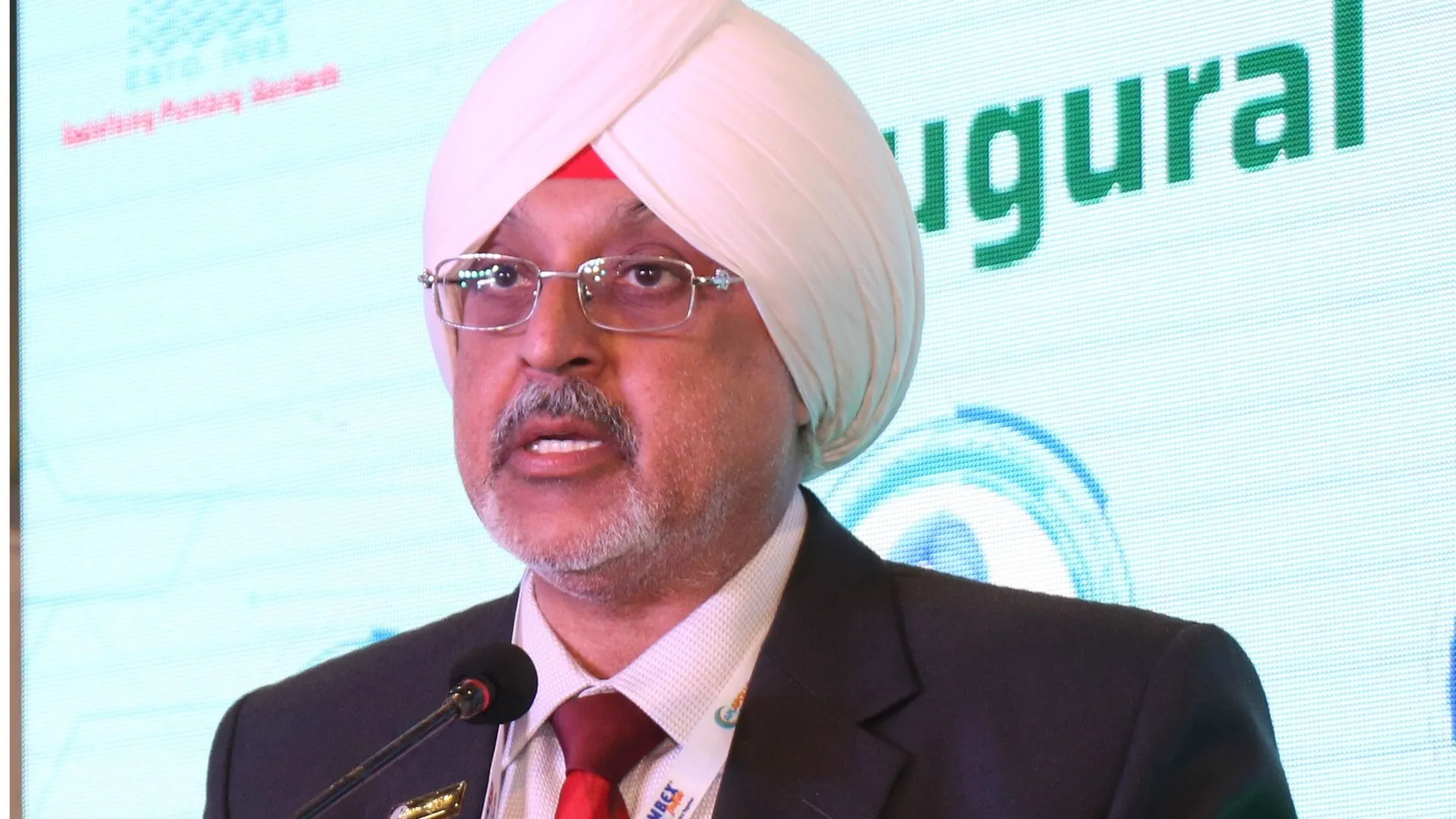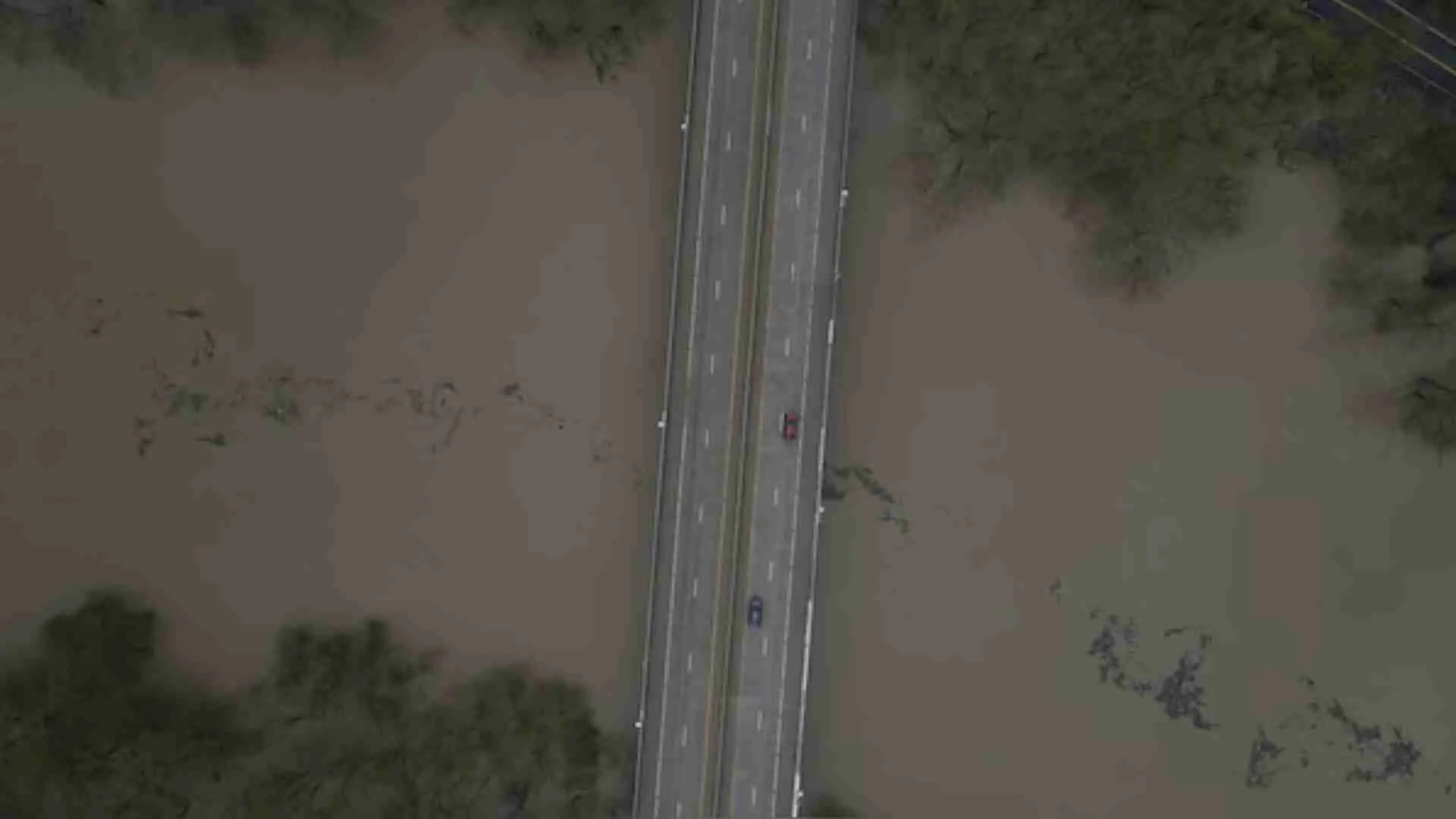4 December was Navy Day and 8 December was the anniversary of the submarine arm of the Indian Navy. In the maritime security environment, presently in the Indian Ocean Region and what is being termed as the Indo-Pacific, the Submarines and eventually nuclear Submarines will play a pivotal role both as a factor of deterrence and defence of the Indian coastline, maritime interests and the Indian Nation. This is with specific regard to, the ominous building of strong economic and defence relations between China and Pakistan.

A close-up view of Foxtrot class submarine.

Foxtrot class submarine.

Indian Navy commissions first P15B Destroyer INS Visakhapatnam.
The world’s attention is now finding a clear definition or strategy, in terms of containing the out-worldly expansionist and fast-growing influence, rather threat, to the Democratic Nations from China, beyond India’s land borders in Ladakh and Arunachal Pradesh.
The second edition of the Naval Commanders’ Conference of 2021 was held on 18 October 2021 in New Delhi. Addressing the Naval Commanders during the inaugural session, Defence Minister Rajnath Singh stated that as a responsible maritime stakeholder India supports consensus-based principles and a peaceful, open, rule-based and stable world order and envision the Indian Ocean Region (IOR) with the universal values of rule-based freedom of navigation and free trade in which the interests of all participating countries are protected. He added, “It is a matter of great pride to know that out of 41 ships and submarines ordered by our Navy, 39 are from Indian shipyards. This is a testament to the Navy’s commitment to ‘Aatma Nirbhar Bharat’.”
China has already delivered in November, its largest and most advanced warship to Pakistan as it seeks to strengthen the navy of its all-weather ally in the Arabian Sea and the Indian Ocean. This is where it has increased its own naval presence in recent years.
On the Indian scene, the focus is on the very recent acquisition and commissioning of INS Vela, the fourth of Kalveri class, of the six Submarines of the ‘P75I Project’ being built at the Mazagon Docks in Mumbai, with French collaboration of their Scorpene Submarines.
A few days ago, the new Naval Chief Admiral Radhakrishnan Hari Kumar stepped into office, with an onerous task of carrying forward, the pending case for six nuclear-powered attack submarines, along with a third aircraft carrier, to neutralise the acidic collusion of China-Pakistan in the Indian Ocean region. This will be an effort to create a formidable maritime theatre command, to come up at Karwar in Karnataka, as part of an integrated defence capability. In this endeavour, the Navy is looking at a scenario of jumping from 130 to170 warships with an additional facility of Drones and from 130 to 320 aircraft, in the next five years.
INS Vela was commissioned by the recently retired Navy Chief Admiral Karambir Singh at the naval dockyard in Mumbai on 25 November. This is the second addition, in recent weeks, to the Indian Navy’s fleet of warships after INS Vishakhapatnam, the first of the Vishakhapatnam class, a stealth guided-missile Destroyer equipped with the deadly BrahMos surface-to-surface missile, which was commissioned a few days earlier by Rajnath Singh.
“The commissioning of ‘Visakhapatnam’ will reaffirm India’s presence amongst an elite group of nations with capability to design and build advanced warships,” the Vice Admiral Satish Namdeo Ghormade said on the occasion. In a veiled dig at China, Rajnath Singh had remarked, “some irresponsible nations” for the sake of their narrow partisan interests and hegemonic tendencies were advocating inappropriate interpretations of the UN Convention on the Law of the Sea (UNCLOS).
The Indian Navy celebrated Navy Day on 4 December, in the Golden Jubilee year, which marks 50 years of the famous naval victory in 1971. In honour, the Western Command of the Indian Navy exhibited the country’s largest flag, 225 feet by 150 feet, at Mumbai’s Dockyard overlooking the Gateway of India. The Navy should feel proud to have initiated indigenous warship building capability.
The P75I project, conceptualised for the acquisition of 25 submarines in collaboration with DCNS of France, at the time of former Prime Minister I.K. Gujral’s Government, evolved into a 30-year plan for building submarines in India. This is a project that was delayed for questions over the reluctance of the French Government to act on the commitment for “transfer of technology” that apparently was an integral part of the contract. The first of the six subs, INS Kalvari, was commissioned five years behind schedule, in 2017. After Kalvari, two more submarines under the contract, INS Khanderi and INS Karanj, were commissioned. Vela is the fourth, and sea trials are ongoing for Vagir, while the sixth, Vagsheer, is under construction.
Vela which can take up to eight officers and 35 men, is named after a decommissioned submarine Vela, which served the Navy from 1973 to 2010. The earlier Vela belonged to Foxtrot class submarines of the erstwhile Soviet origin.
Vela is a diesel-electric powered attack submarine, designed to act as “sea denial” as well as “access denial” warfare to the adversary.
The submarine can engage in offensive operations across the entire spectrum of naval warfare, including anti-surface warfare, anti-submarine warfare, intelligence gathering, mine laying, and area surveillance.
Indian Naval experts are exploring a strategy where, while the Army would hold the Chinese forces at the Himalayan borders, the Navy can go on the offensive in the Indian ocean. This could be the first of a tri-service strategy to oppose China, from—blocking an Asian Competitor. The thinking is based on the fact that the overwhelming presence of the US 7th Fleet coupled with Australian nuclear submarines in the near future, in and around the south China Seas, the Chinese nation will not be able to defend its sea lanes in the Indian ocean. With an airbase in the Car-Nicobar Islands, the Straights of Malacca can then be turned into an Indian dominated battlespace.
The Indian Naval presence in the Indo-Pacific becomes important beyond a perceptible surface force by itself, or as part of aligned forces, enhanced by the stealth and deterrent presence of submarines. Moreover, the Chinese regional diplomacy has leveraged its infrastructure projects in conjunction with the flexing of its military muscle.
India has growing strategic interest due to its strong economic and political relations with Southeast Asian countries along with concerns about the safety of the sea lanes. Besides participating in the ASEAN-led organisations, it is also an active partner in the Quadrilateral Dialogue (US, India, Japan, and Australia) in pursuit of its larger Indo-Pacific vision. As part of its multilateral diplomacy, significant to note that India carried out a six-day long ‘sailing’ in the South China Sea in 2019 with the US, Japan, and the Philippines. India remains sensitive to the concerns of ASEAN and the littoral states.
From Modern submarines, the thought goes back to the first lot of submarines of Foxtrot class better known as Kalvari-class, well established in the year 1982, which was the 15th Anniversary of the Indian Submarine arm.
At that time, a request had come to Doordarshan from the Naval Headquarters through the PRO of Navy, C. Uday Bhaskar, presently Director, Society for Policy Studies and a writer-commentator on Defence and Strategic Affairs, then PRO Indian Navy, to make a documentary on the Indian Submarines, for their Navy Day.
The pressure of the Asiad 82 was an overriding factor and most of the Producers of the Delhi Kendra, which was partially the headquarters of Doordarshan at that point in time, were wholly preoccupied with the scenario of the game. The mantle fell on the News department. Once the team was put together, it was advantageous for both the Navy and Doordarshan to pull out the latest arsenal in its technical facilities, the freshly acquired ENG (Electronic News Gathering) JVC (Japan Victor Company) Low Band U-Matic colour cameras. (I had got special training in electronic news gathering and satellite exchange, the previous year at the Asia-Pacific Institute for Broadcast Development AIBD at Kuala Lumpur).
This was a systemic change from the long-established 16mm cameras where the reversal or negative film used was black and white since the Network of Doordarshan had not yet changed to colour. Perforce, judging the complex nature of the project, I needed to make a reconnaissance trip to the Naval base in Vishakhapatnam.
In Vizag, I was introduced to Capt. Bhim Uppal in his office, in-charge of the Submarines at Virbahu the base of the Submarine arm. INS Virbahu was commissioned as the shore support base for submarines in May 1971 and with this, the 8th Submarine Squadron of Vela class submarines was based here. The Commanding Officer INS Virbahu was also designated as the Captain submarines 8th Submarine Squadron. Thereafter, with the induction of the Sindhughosh class submarines, the 11th Submarine Squadron was created. As two Submarine Squadrons were based at Visakhapatnam, comprising eight submarines, the scope of responsibility of the Commanding Officer, INS Virbahu, increased manyfold. Initially, all training, maintenance, operational and logistic matters pertaining to submarines were dealt with by Virbahu and it continues to be regarded as the ‘Home of the Dolphins’ even today.
Capt. Uppal and I discussed at length, the operations of the submarines and I made detailed notes of men, material and drew up a rough shooting script which could be packed into 30 to 50 minutes of a documentary script. These details were later discussed with my camera person Sudhir Tandon who was then heading the camera unit, along with Lieutenant Commander Bhaskar, to assimilate the entire gamut of what constitutes the day-to-day schedule of Officers and sailors, rather than submariners.
I took the opportunity of going inside one of the two subs berthed at special locations at Dolphins Bay at the naval dockyard. I tried to calculate the time required as we moved from one part of the boat to the other, in the limited area movement inside the submarine. It was an awe-inspiring experience, initially claustrophobic, as soon as one entered through the conning tower and was cautioned frequently to mind my head. One really wondered what a tough task it would be to man these boats. It was one thing to watch the movie ‘The Russians are coming’ and another, to be actually inside a submarine made by them.
In 1982, electronic colour portable cameras had come to India. This was the low band U-Matic technology using a one-inch videotape that had an inherent audio track. The magnetic tape was rolled into a slick cassette some 8 inches long. Such cassettes were an extension of the audio cassettes already flourishing in the market. The time length of each cassette was 20 minutes and one had to plan the number of cassettes that had to be taken out for a documentary, especially when one goes out of town and to a distant place for an ENG shooting.
Lieutenant Commander Bhaskar says, “The documentary film made by Doordarshan Delhi in late 1982 for the 15th anniversary of the Indian Navy’s submarine arm was a significant public awareness punctuation for the Indian audio-visual media in relation to the ‘silent service.’ I was a Lt. Cdr at the time and relatively new to the whole PR domain but when this was film mooted by the Navy—Admiral Dawson the Naval Chief was very supportive. Within the MoD, then DPR. I Ramamohan Rao was a pillar of support and helped me with the complex procedures of obtaining approval—with little fiscal support! The Navy’s aviators did the submariners proud by providing a Dornier aircraft to ferry the TV team led by Rajiv Kumar…and that was quite a journey. In Vizag, HQ of the submarine arm—Capt. Bhim Uppal—the CO of INS Virbahu was very helpful—and without his attention to detail—many professional aspects may have been missed. The FOC-in-Chief, Eastern Naval Command, VADM M.K. Roy was also very forthcoming despite the novelty of the project and not quite knowing what the final product would be. But in retrospect—clearly, Doordarshan Delhi came up trumps.”
Remembering the beginning of the project, Tandon remarked, “When we reached Delhi’s Palam Airport Technical Area, I was astonished to find a small executive aircraft of the Indian Navy that was to carry a four-member crew of Doordarshan to Visakhapatnam or Vizag. In my childhood, I took a joy ride on a small Piper plane. Since then, it had always been a big aircraft that one had flown in. So, the thrill of that joy ride that had rushed in me was slightly dampened by the news that it was going to be a long journey to Vizag, with a couple of hours’ halt at Nagpur for the refuelling of the executive plane which was unpressurised and flew at a height of 10,000ft and had no toilet or catering facilities and we took off in the darkness of nightfall, having loaded all our equipment just a few feet behind our seats.”
Those flying were expert naval pilots. Once settled in Vishakhapatnam the entire area of the Naval dockyard was agog with the news of a Doordarshan team out to shoot inside the high-security area. We were lodge at a mess some distance away. Admiral Roy had ensured that we got the facility of two Chetak Navy helicopters to take us on a guided tour of the dockyard and get us to have a feel of the close coordination required for the shoot at the high sea, not far from the coastline, for filming the submarines submerge, as well as resurface. This was the real tricky part. We had one great advantage, a facility available as part of the new technology. The eye lens which was like a small square TV picture tube, allowed us to immediately view the shot. All we had to do was to rewind the camera recorder and play it instantly, but the viewfinders output was only in black and white. Since on the day of this sequence, which was at the end of the schedule, both Sudhir and I were sitting behind the pilots in the Chetak helicopters, we could instantly gauge whether we were satisfied with the shot or not. This had also been practised during the entire shoot, as those young Officers who were attached with us, including some Seniors and Lieutenant Commander Bhaskar, were able to preview the footage when we used to get back from the shoot. In the order of the shoot, we first cleared all the port requirements like the morning Assembly of the Officers and the sailors on the surface, in front of the submarine, followed by all other areas of land operations.
The excitement amongst the Officers and the sailors, when we moved from one place to the other, give us a heightened feeling of being some kind of celebrity. We had a white Maruti Gypsy permanently with us.
In our five days stay, one evening other than the last one was arranged as a special event evening for the Officers and their families, who were equally keen to be a part of the shoot. We were surprised to see a folding screen in the forefront greens of Virbahu, the base of the Submarine arm with dozens of men and women, obviously, the naval families, assembled in neatly laid out chairs, for a show. We thought that’s besides meeting us as a team from Doordarshan, these assembled guests were about to watch some movie. Little did we know and to our utter surprise, it turned out to be a presentation of our shooting tapes, the actual coverage. Instantly Sudhir and I wondered, whether the smart engineers amongst the Naval families, had got our equipment and managed to take a video-out line, to screen it from a projector. Well, it was not so, but we learnt later, with an apology from the right source, that young Officers of the Navy had actually hijacked our tapes and tried to convert them onto a VHS for playback for the Naval community, who were indeed very desirous of seeing the men in the White in their official avatar.
The shooting tapes are indeed a precious ‘lot’ of our baggage which has to be religiously guarded with ‘extra care’ for one, we may not accidentally reuse them thus erasing the shot footage and otherwise, as, without these tapes, we are a lost entity. But we were in a highly secure area. We were told later, that a desperate attempt was made to enable the Naval Officers and families, to see the actual dockyard work atmosphere and boats at sea, first time and in colour. The services of the NPOL the Naval Physiological Oceanography Laboratory were taken for this extraordinary feat at that time. It gave us a great feeling, something we had come to capture on camera, the sense of dedication of Armed Forces who are always there to protect our borders/coastline.
Recalling the moments, Tandon remarked, “The most enthralling part of this documentary was that the filming was done, perhaps, for the first time from air, land, sea (aboard a ship) and underwater. Even though I’d shot cross-country cycling events from an IAF helicopter for the Asiad, filming the Submarine rising and ducking in the blue waters, like a whale, from aboard a Navy chopper was a rousing experience. This exhilaration turned into a moment of shock and fright when the submarine that we were filming in, suddenly dived into the sea. The view from the submarine’s periscope took me back to my physics class at school where we had constructed our own periscope.”
The few days spent at Vishakhapatnam were indeed rewarding in terms of a rich experience and thrilling footage from one of the very first ENG colour cameras which was the beginning of the real Electronic Media in the country.
Once underwater, inside the submarine during the shooting schedule, we were given the opportunity to ‘shoot’ the men in their actual positions and react to commands in real-time. The Commander of the submarine offered a toast to the Doordarshan crew. Sitting close to each other in his cabin, as space is a big factor, when we picked our glasses for the toast, the sip of the contents bewildered us. It was no wine or champagne, but seawater from the depth of the submarine’s dive. This is the custom for new entrants to the submarine service, as a welcome to the family. We were at a depth of 200 feet.
Eventually, the documentary turned out to be titled ‘Sentinels of the Deep’. The submarines still remain so, more powerful, lethal, and guardians of the Nations maritime interests, accentuated now with the challenges put forth by our adversaries China and Pakistan and the requirements to keep the sea lanes free in the Arabian Sea, Indian Ocean Region and the Indo-Pacific.
The writer is former Chief Producer, News & Current Affairs, Doordarshan. He is a Fulbright Scholar, Syracuse University, Upstate New York.

